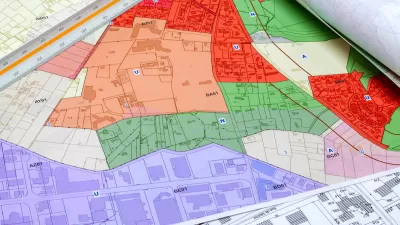Change Observer interviews Casey Jones, the director of design excellence and the arts for the U.S. General Services Administration about green building and sustainability in urban design.
Jones is in charge of ensuring the design quality of federal buildings, retrofits, and the art within.
"Alexandra Lange: GSA has been doing sustainable projects for quite a while. Are there specific goals for sustainability the new projects have to reach?
Casey Jones: The GSA was one of the first institutional clients to mandate that our buildings were at a minimum LEED Bronze, and then that was upgraded to Silver. We still have Silver as a minimum standard, but we are doing lots of things to try and exceed that. We are migrating to more of an integrated design method for the development of our projects, rather than putting all of the emphasis on the strength of the lead designer. In order to get a truly sustainable building you need to think about how all the systems are going to integrate and reinforce each other right from the beginning.
It is not only the design of the building but also stressing, in accordance with what the White House is calling for, that we locate them in downtown neighborhoods, close to transit centers. That buildings are integrated into their cities in a way that allows us to maximize benefit for everybody.
Alexandra Lange: Is there an idea that everything needs to be close to public transport, or are there other ways to address that call from the White House?
Casey Jones: A lot of what we are looking at today are renovations to existing buildings that were built in what I would describe as a less enlightened time relative to these issues. To try and create more welcoming plazas. To try and make them better neighbors to the fabric that exists around them. For new construction, perhaps locating on sites that cities are having a difficult time getting local development to move on or that fit within larger goals of how they want to develop."
FULL STORY: Casey Jones

Planetizen Federal Action Tracker
A weekly monitor of how Trump’s orders and actions are impacting planners and planning in America.

Maui's Vacation Rental Debate Turns Ugly
Verbal attacks, misinformation campaigns and fistfights plague a high-stakes debate to convert thousands of vacation rentals into long-term housing.

San Francisco Suspends Traffic Calming Amidst Record Deaths
Citing “a challenging fiscal landscape,” the city will cease the program on the heels of 42 traffic deaths, including 24 pedestrians.

Trump Prompts Restructuring of Transportation Research Board in “Unprecedented Overreach”
The TRB has eliminated more than half of its committees including those focused on climate, equity, and cities.

Amtrak Rolls Out New Orleans to Alabama “Mardi Gras” Train
The new service will operate morning and evening departures between Mobile and New Orleans.

The Subversive Car-Free Guide to Trump's Great American Road Trip
Car-free ways to access Chicagoland’s best tourist attractions.
Urban Design for Planners 1: Software Tools
This six-course series explores essential urban design concepts using open source software and equips planners with the tools they need to participate fully in the urban design process.
Planning for Universal Design
Learn the tools for implementing Universal Design in planning regulations.
Heyer Gruel & Associates PA
JM Goldson LLC
Custer County Colorado
City of Camden Redevelopment Agency
City of Astoria
Transportation Research & Education Center (TREC) at Portland State University
Jefferson Parish Government
Camden Redevelopment Agency
City of Claremont





























